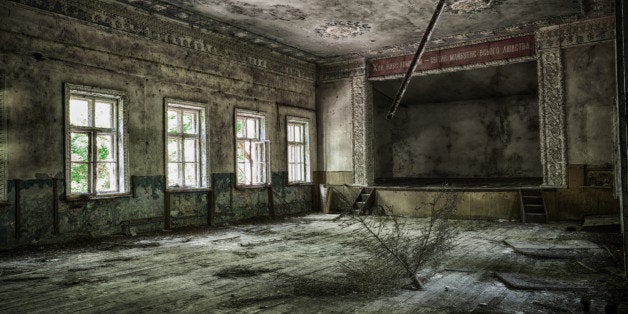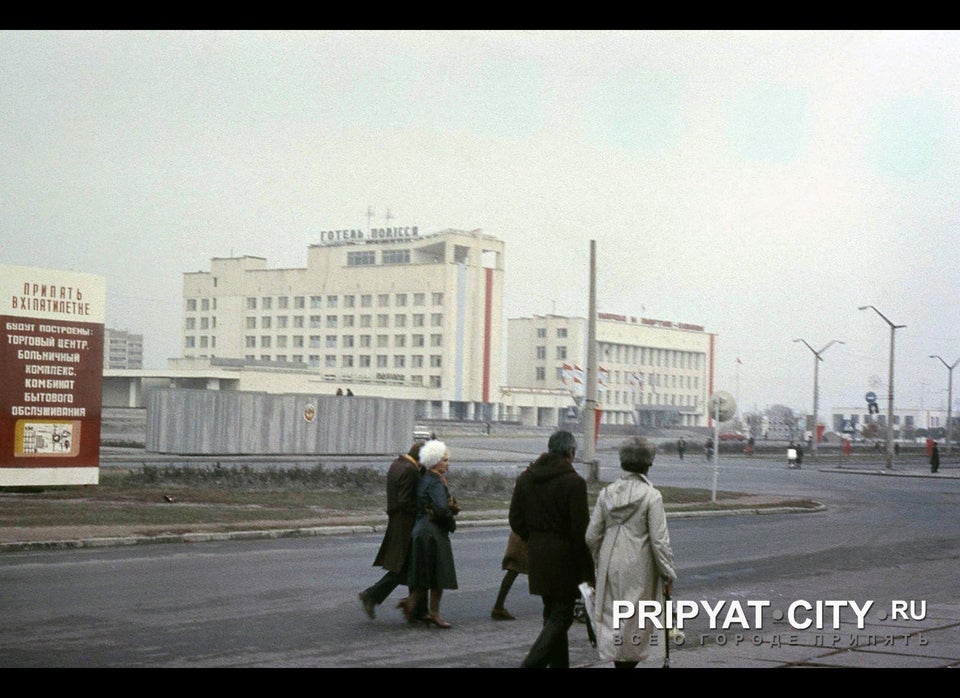
On April 26, 1986 the Chernobyl Nuclear Power Plant's reactor No. 4 exploded after a cooling capability test, resulting in the release of radiation 400 times more potent than the bomb dropped on Hiroshima. I served as a Peace Corps Volunteer in Ukraine and later returned to research a travel guide. While there I discovered that dark tourism had arrived in Ukraine: Chernobyl was now open to tourists.
The email I receive confirming my tour of Chernobyl is a strange mix of cautious warnings and exuberant enthusiasm. It details the dress code which includes no shorts, open-toed shoes or short-sleeved shirts to prevent contamination and promises many highlights. My group is mostly men -- international backpacking types looking for a cool story. Strange how people couldn't escape Chernobyl fast enough and now here come the Western tourists paying to get in.
After the explosion 116,000 people were evacuated but of those, 1,200 defied authorities and returned. Today their numbers have dwindled down to around 120, mostly due to deaths from old age (but how many died prematurely due to health complications from exposure is harder to gauge.) I momentarily fall victim to that human tendency to dismiss misfortune by finding some absence of "common logic" to blame it upon. I remind myself that this was their home. They had no where else to go. Why would they leave?
Two hours later and the cameras are already starting to go off -- click, click, click -- as we pull into the first checkpoint. So far the Exclusion Zone resembles many Ukrainian towns after the collapse of the Soviet Union; a few abandoned buildings and some guards smoking on the sidewalks.
The bus stops, and we're escorted into a cramped, wooden office building. Our guide, Igor, takes out a map that looks like a paint ball has been pelted against it -- smatterings of red going out in every direction. The red markings, he explains, show the different radiation levels throughout the region. Some parts are heavily effected, but a hundred yards away it's possible to find stretches where radiation levels are minimal. We're going to stay within "the safe" perimeters and Igor reassures us that the amount of radiation we are going to be exposed to is the same as one would experience on a transatlantic flight. Whatever comfort this offers is undercut as he passes out the Geiger meters which are already beeping. As we make the slow drive to the town of Pripyat the Geiger's tempo increases, rattling my nerves and making the others giggle nervously.
Eclipsing the horizon, reactor No. 4 is an ominous behemoth; all concrete and collapsing steel. The building's sarcophagus, which aimed to seal off the 200 tons of molten radioactive material below, looks haphazard at best. Planning is underway on the New Safe Confinement, with promises to harness the contaminated material by 2015 and so trucks occasionally drive into the gated facility to drop off workers in hazmat suits. The sounds of camera shutters momentarily overpowers the clicks of the Geiger meters as the group hustles to get a photo in front of the infamous building. I'd like to say that I was above the whole scenario and scoffed at having my picture taken... but I did. Click. Officially a tourist.
The sign for Pripyat has held up well, making me think how great a place this would have been to live in its heyday. With a school, gymnasium, hotel and restaurants, this town would have been special in any country; let alone Ukraine where most villages are thankful if they have 24-hour running water. Now before me was nothing but ruble and the ever-present sound of crunching glass shattering as we traipsed through the vacant city center.
The center's focal point is the House of Culture that looms in the distance like a doomsday movie soundstage. Inside faded murals of Soviet glory and deteriorating flags cling to the damp walls. Rainwater cascades through holes in the ceiling, falling upon rotting furniture and mold-covered glassware. For the moment we're allowed to explore on our own so I take an overgrown path to the School House, careful not to step on the moss that acts like a radioactive sponge. Once inside I discover rooms filled with overturned desks, windblown pages from books throughout the corridors and faint outlines of homework assignments on deteriorating chalkboards. In the second floor hallway I find a gas mask hanging from one of the collapsed support beams. No doubt planted here as a photo-op prop, it still makes for an eerie-sight.
The Theme Park, where the now excessively symbolic Ferris-wheel lingers, is behind the school. Scheduled to open up on May Day (May 1, 1986) it saw its only guests for just a few hours the day after the accident in an attempt to entertain and distract locals. Authorities at first claimed radiation levels were minimal, making me wonder how many people giggled while riding the bumper cars, unaware of the exposure danger they were in. Strange to be in a place where the world has ended and expect the sounds of laughter.
We all pass through dosimeter control without incident on the way out, not to say we aren't affected. On the bus ride back to Kyiv the group is remarkably quiet. Perhaps in the end, we were exposed to something after all.
